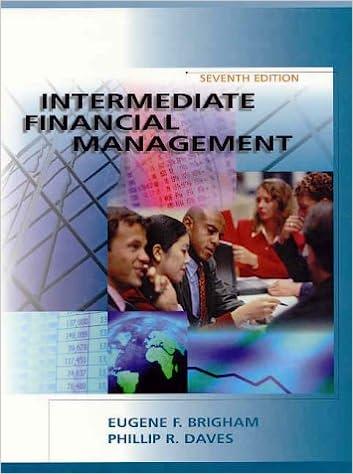Answered step by step
Verified Expert Solution
Question
1 Approved Answer
Suppose that you have estimated the FamaFrench three-factor and four-factor models for three different stocks: BCD, FGH, and JKL. Specifically, using return data from 2005
Suppose that you have estimated the FamaFrench three-factor and four-factor models for three different stocks: BCD, FGH, and JKL. Specifically, using return data from 2005 to 2009, the following equations were estimated:
| Three-Factor Model: | ||
| BCD: | [E(R) - RFR] = (0.961)(M) + (-0.028)(SMB) + (-0.390)(HML) | |
| FGH: | [E(R) - RFR] = (1.023)(M) + (-0.064)(SMB) + (0.367)(HML) | |
| JKL: | [E(R) - RFR] = (1.190)(M) + (0.496)(SMB) + (0.538)(HML) | |
| Four-Factor Model: | ||
| BCD: | [E(R) - RFR] = (0.996)(M) + (-0.016)(SMB) + (-0.317)(HML) + (0.083)(MOM) | |
| FGH: | [E(R) - RFR] = (1.097)(M) + (-0.023)(SMB) + (0.462)(HML) + (0.153)(MOM) | |
| JKL: | [E(R) - RFR] = (1.029)(M) + (0.489)(SMB) + (0.328)(HML) + (-0.260)(MOM) | |
- You have also estimated factor risk premia over a recent 15-year period as: M = 7.31 percent, SMB = 1.98 percent, HML = 4.41 percent, and MOM = 4.96 percent. Use these estimated risk premia along with two factor models estimated to calculate the expected excess returns for the three stocks. Round your answers to two decimal places.
Three-factor model Four-factor model BCD: % % FGH: % % JKL: % % - Suppose that you have also estimated historical factor risk prices for two different time frames: (1) 30-year period: (M = 7.06 percent, SMB = 1.58 percent, and HML = 5.32 percent), and (2) 80-year period: (M = 7.94 percent, SMB = 3.60 percent, and HML = 5.00 percent). Calculate the expected excess returns for BCD, FGH, and JKL using both of these alternative sets of factor risk premia in conjunction with the three-factor risk model. Round your answers to two decimal places.
30-year period 80-year period BCD: % % FGH: % % JKL: % % - You now also consider historical estimates for the MOM risk factor over the two additional time frames: (1) MOM = 7.92 percent (30-year period), and (2) MOM = 9.83 percent (80-year period). Using this additional information, calculate the expected excess returns for BCD, FGH, and JKL in conjunction with the four-factor risk model. Round your answers to two decimal places.
30-year period 80-year period BCD: % % FGH: % % JKL: % % - Do all of the expected excess returns you calculated in part (a) and part (b) make sense? If not, identify which ones seem inconsistent with asset pricing theory and discuss why.
The excess returns for -Select-stocks BCD and FGHstocks BCD and JKLall the stocksItem 19 for all periods seem moderately large. This is partly due to the fact that the regressions unlike factor risk premia were estimated using data from much -Select-longershorterItem 20 periods.
Step by Step Solution
There are 3 Steps involved in it
Step: 1

Get Instant Access to Expert-Tailored Solutions
See step-by-step solutions with expert insights and AI powered tools for academic success
Step: 2

Step: 3

Ace Your Homework with AI
Get the answers you need in no time with our AI-driven, step-by-step assistance
Get Started


